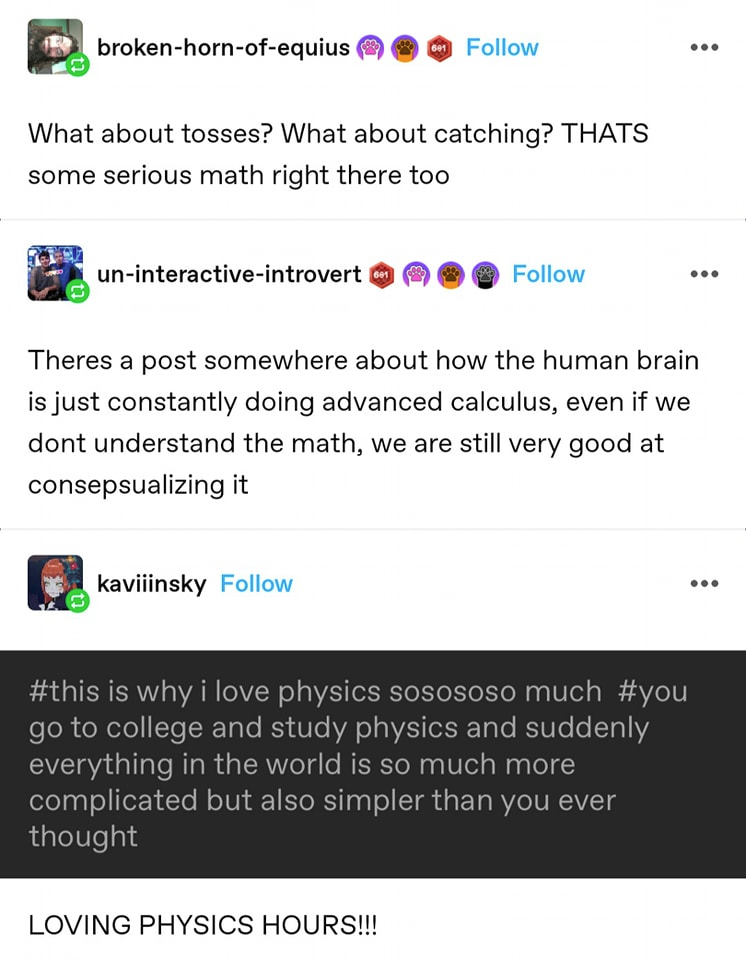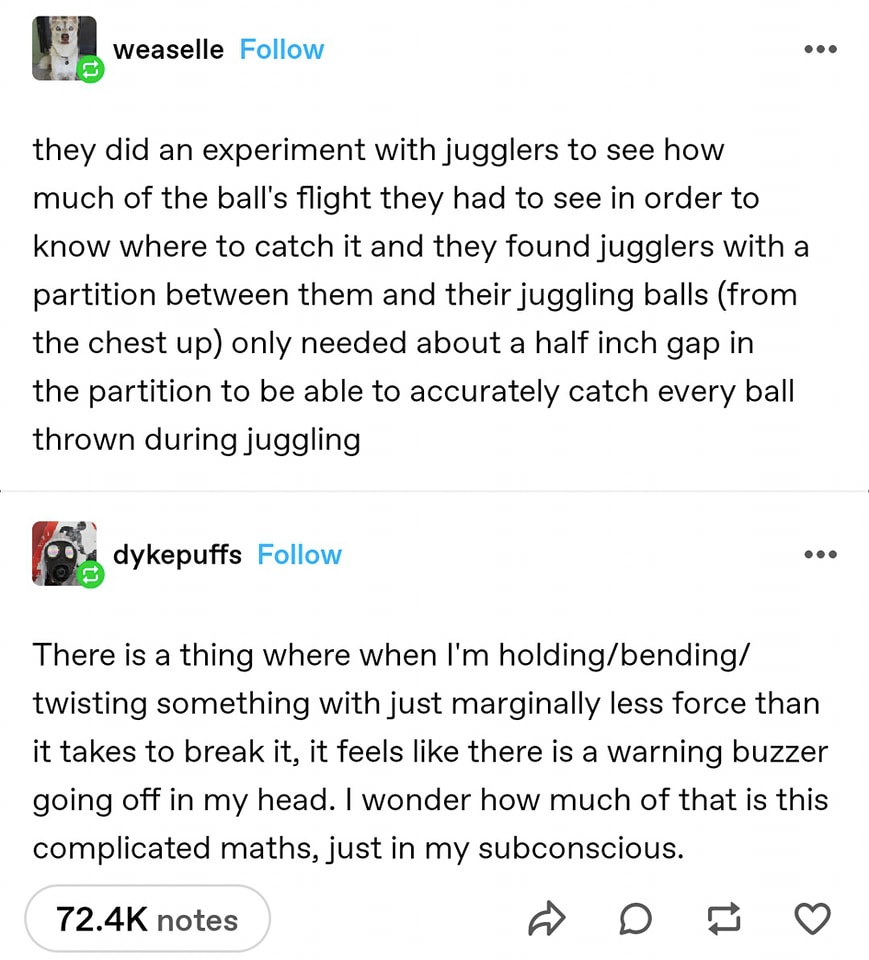

I always imagine it more like neural networks. simply based on a lot of training and experience. As an example think of times when you step onto a non moving escalator. Your mind definitely knows its not moving but you still can’t defeat the trained expectation of jerk.
My brain is like a neural network? No way…
more like neural networks are maybe like your brain? dunno not an expert, just a feeling
Have you ever swiped on your phone, but the screen doesn’t move (due to end of content, or unknowingly being an unswipable screen), and you feel your eyes jerk automatically in reflex, predicting the movement that didn’t happen?
A lot of it is less math and more just approximations using old data, just fitting a complex statistical model neural nets suck ass at math
Yeah, your brain is not doing projectile motion equations in real time, it’s the same process as teaching a neutral network to approximate a parabola.
Don’t get me wrong, it’s incredibly impressive that this prediction in our brain requires the visual processing of data from eyes to identify an object flying through the air, moving our hand in a perfect intercept course to catch it. All without having to have a ton of data points to ‘train’ on.
I always thought about how interesting it is that handing things to people is so reliable. We just kind of know exactly when the other person has grabbed something enough for us to let go.
And then there’s the rare moment when you think they have it so you let go and it falls to the floor 😭
deleted by creator
A lot of it is the difference between learning practically and learning theoretically. You don’t have to understand the underlying mechanics in practice to know how to keep getting the same result. Your brain doesn’t have to be doing any math, it just has to have shaken a bottle enough times to have a good comparative basis formed.
Learning to calculate the current remaining volume in a container when observing someone else shake it… that would use all that theoretical knowledge and math.
It’s like knowing how hard you have to throw an egg at a wall for it to break instead of bounce off. You do it 100 times, you just get a good feel for it. Doing all the math, and then trying to learn it practically is barely gonna affect how quickly you learn it in practice. But if you wanted to make a robot that throws it exactly hard enough without wasting any energy, practical knowledge will have almost no value, and theory and math will be incredibly valuable.
This is coming from someone who does indeed have the whole “passive trajectory analysis of every moving object around me” thing. I can’t do crowds or drive at busy times. But, for moving through a minor crowd while reading a book, or pulling into a tight parking space while other cars are moving around near me, it’s very helpful. I have good spatial awareness in general, like parking in my garage with only an inch of clearance on the far side of my car has never been an issue in 14 years so far. Or when doing it with someone else’s borrowed car every now and then too. When I shrug off the difficulty of doing something like that, people seem to be amazed. Otherwise, I would have assumed it was normal, feels normal to me.
_
I would say there is still some complicated stuff going on in the brain with knowing where your arm, hand, elbow and shoulder are in space as well how much force you need to apply (the precise amount of motor neurons to activate at the exact time) so you can toss the ball in the arc you need to catch it on the other side.
Sure. I myself am not good a coordination, can’t juggle shit.






